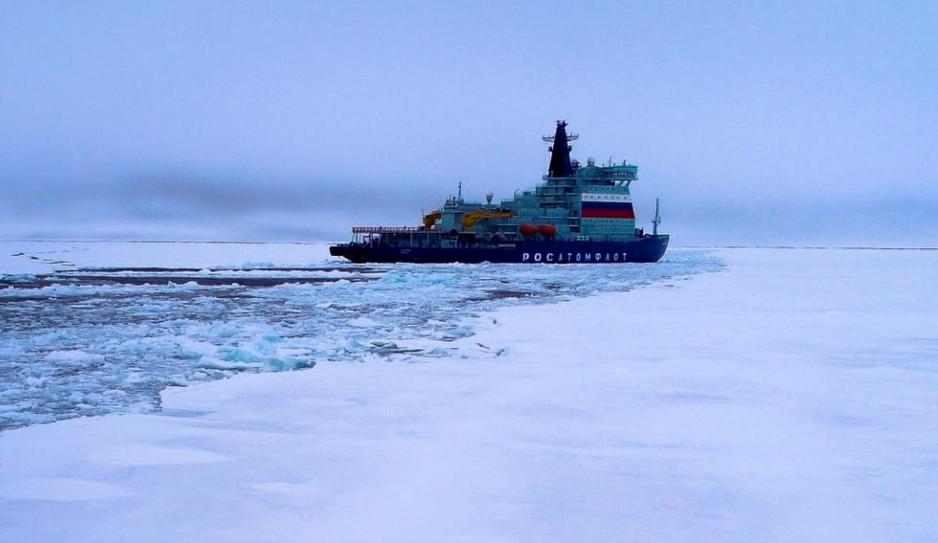Russia's New Super Icebreaker Reaches North Pole During Ice Trials

Arktika passing through sea ice at the North Pole. (Source: Courtesy of Baltic Shipyard)
Russia’s future flagship icebreaker Arktika reached the North Pole during its first sea ice tests. The vessel is the world’s most powerful icebreaker and the first of five new nuclear icebreakers of this type.
Arktika departed from Saint Petersburg in the Baltic Sea on September 22 as part of a shakedown cruise to test the ship’s capabilities. Representatives from the Baltic Shipyard, where Arktika was constructed, and the future owner, Rosatomflot, are on board during the voyage, which includes ice trials.
The ship passed over the North Pole during the evening of October 3 encountering medium ice conditions the Baltic Shipyard reports.
The vessel is the first of a novel generation of icebreakers, also known as Project 22220 and represents the first new nuclear icebreaker constructed by Russia in 30 years. With a length of 173 meters and a width of 34 meters the ship has a displacement of 33,500 tons.
Under maximum power the three electric motors generate a combined 60 MW.
Four additional vessels of the type will follow in the next five years. Two vessels, Sibir and Ural have already been launched and are awaiting trials and commissioning, with a fourth one currently under construction and a fifth one on order.
Upon return to Murmansk from this trial voyage Rosatomflot, Russia’s operator of nuclear icebreakers, is expected to formally take possession of the ship and operate it along the Northern Sea Route this winter.
Arktika has big shoes to fill
Arktika follows in the footsteps of the legendary original Arktika icebreaker which was in service between 1975 and 2008. In fact, Arktika’s trip to the top of the world comes just over 43 years after its namesake became the first surface vessel to reach the North Pole in August 1977.
The expansion and renewal of Russia’s icebreaker fleet is of national importance and has enjoyed strong support from President Putin. In this light, Arktika’s voyage to the North Pole even before it is officially placed into service, renews Russia’s claim as the undisputed Arctic power home to the world’s only fleet of nuclear icebreakers.
A new generation of icebreakers
The project 22220 icebreakers are designed to keep the waters of Russia’s Northern Sea Route (NSR) open for shipping traffic nearly year-round. They are capable of breaking through three meters of ice continuously and even thicker ice through ramming.
The new ships will escort natural gas and oil tankers through the ice along the NSR to the markets of the Asia-Pacific region.
Construction on Arktika began in November 2013 in the Baltic Shipyard. Sibir and Ural followed in May 2015 and July 2016.
The project faced a number of hurdles, e.g. delays related to the domestic construction of a steam turbine. During initial trials last year a propulsion motor was damaged as a result of an electrical short requiring dry dock repairs and replacement of the motor next summer.
Until repairs are completed Arktika will see a slight reduction in power to 50 MW.
These delays and concerns related to potential flaws in the design have led critics to question the capability and durability of this new type of icebreaker. While ice thickness at the North Pole during early Fall does not serve as a true test of Arktika’s capabilities, this voyage nonetheless cements Russia’s claim as the operator of a fleet of icebreakers that can travel anywhere in the Arctic at any time of the year.

